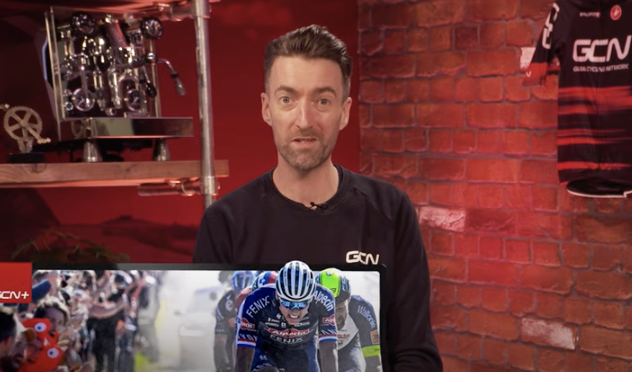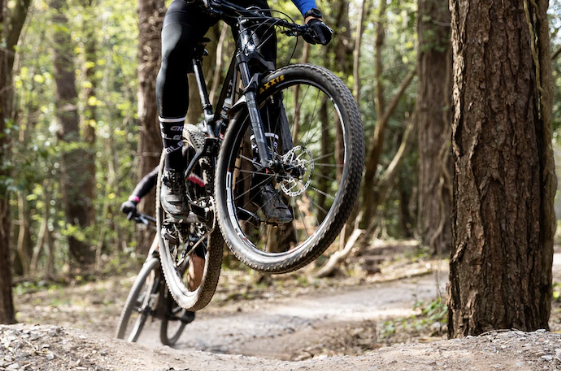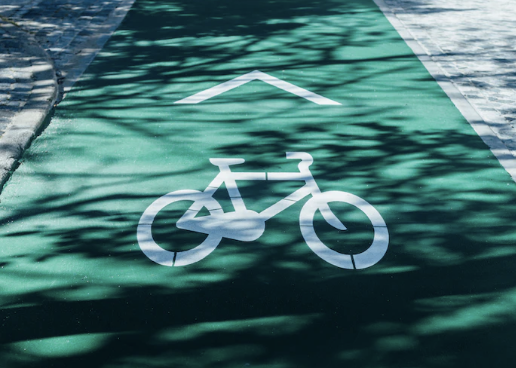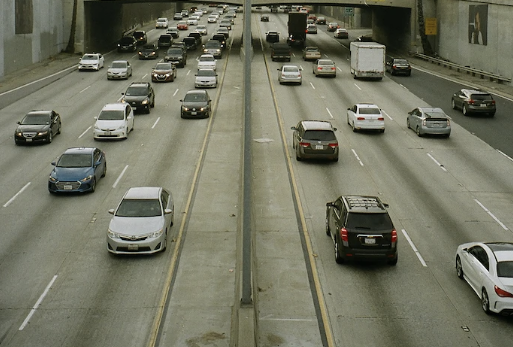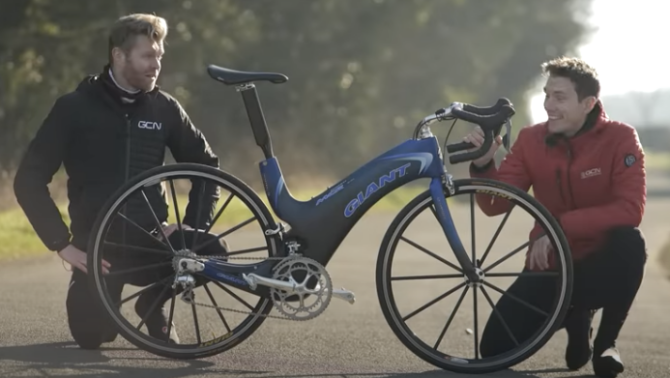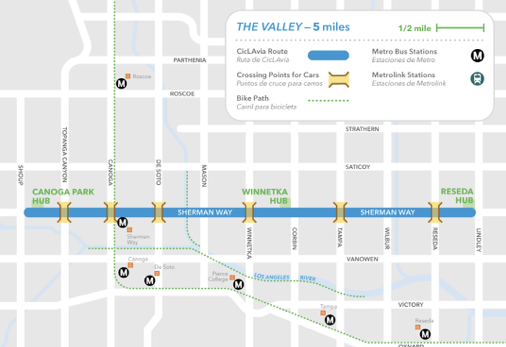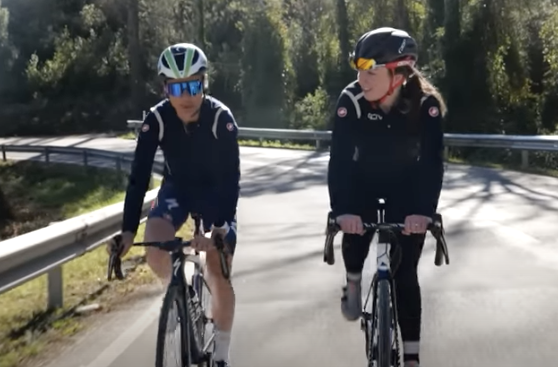Six race days, five wins. Tadej Pogačar is on a tear in 2023, taking his career victories total past 50… and he’s still only 24 years old! How does he compare to past greats and are we now living in the age of Pog? Dan also rounds up the week’s action from the Algarve, Andalucia, the virtual world & more, as well as looking ahead to the cobbled classics, which are just FIVE days away!
From BikeRadar.com
A step-by-step guide to getting your bike into the air
By Nick Clark
The bunny hop is a useful mountain biking skill that can get you out of trouble, keep you moving forwards at speed and help you clear big jumps better.
The technique is also the foundation of learning how to jump, and will enable you to get airborne from features along the trail.
In this guide, we’ll explain how to pull off the smoothest, highest and most controlled hop.
Sometimes called the ‘American bunny hop’, bunny hopping involves getting the front wheel up first, then springing up and ‘scooping’ the rear wheel behind you (similar to an ollie on a skateboard).
It takes plenty of practice to perfect, but is a skill that all riders will benefit from learning.
The so-called ‘English bunny hop’ relies on using your clipless pedals to pull up both front and rear wheels simultaneously.
While this is a useful technique for jumping small obstacles on the trail, we’re going to focus here on learning the former, which can be done with either clipless or flat pedals. While it takes a little extra practice, it’s much more effective.
1. Practise the pumped manual
The first and most important thing to master is the pumped manual.
To start, coast at a steady pace with your cranks level and your forearms low. This position is usually referred to as the attack position.
Compress your suspension by quickly sinking your body and hips into the bike. This short burst of energy will prime your suspension, ready for it to spring the front end into the air.
Photo by Ashley de Lotz on Unsplash
From Spectrumnews1.com
Bayshore Bikeway
Embarcadero, San Diego, Calif.
The Bayshore Bikeway, where brisk ocean waves meet the bike ride of your dreams. If you want to get to know San Diego’s very own little island of Coronado, then hop on a bike and head to the Bayshore Trail. Beginning at The Coronado Ferry Landing and continuing for a full 9-miles to Imperial Beach, this path includes a ride past the legendary Hotel Del Coronado and the San Diego Bay National Wildlife Refuge. Stop for some great views you don’t want to miss.
Shoreline Pedestrian Bikepath
Long Beach Shoreline Marina and 54th Place and East Ocean Boulevard
Glide and ride along the water’s edge at the Long Beach Shoreline Bike path. This 3.1 mile scenic trail gives cyclists direct views of the Pacific Ocean and the city’s popular ships anchored in the outer harbor.
Mount Rubidoux Memorial Park
Riverside
Next is the popular Mount Rubidoux Trail, scaling just west of downtown in the city of Riverside. The 3.2-mile loop trail is a paved road, making it a beautiful place for a leisurely walk or ride. Mount Rubidoux Trail has also been designated as a city park and landmark, dating back to 1906. At the top, visitors are treated to panoramic views of local mountain ranges and even more historical attractions that the city has to offer.
Photo by Dário Gomes on Unsplash
Was cycling better back in the day? The likes of the Giant MCR, Lotus 110 and Pinarello Espada pushed the boundaries of bike design, we didn’t have the same obsession with data and aero everything, and Tom Last was a GCN presenter too! Si and Dan discuss the top cycling trends they want to see make a comeback, as well as bringing you all your other favourite GCN Show segments.
From PasadenaNow.com
If you’re an avid bike rider looking for a challenge, mark your calendar for Feb. 18 and 19.
The 45th edition of the annual L.A. Chinatown Firecracker Run (LACFR) this year includes a 40-mile bike ride, whose route runs through Pasadena.
The LACFR is one of the largest and oldest running races in the United States, with a history dating back to 1978.
This year, the event organizers have added the 40-mile bike ride to the race weekend.
The bike ride is starting and ending at the Chinatown Plaza on Broadway.
“The new route goes through Downtown LA, The LA River, Glendale, Eagle Rock, Pasadena, Altadena, San Marino, South Pasadena, El Sereno and Lincoln Heights.”
“We start in the historic Chinatown with a backdrop of City Hall, ride past Los Angeles State Historic Park, Autry Museum, LA Zoo, LA Equestrian Center, Bette Davis Park, Verdugo Mountains, JPL/NASA, Christmas Tree Lane, Eaton Canyon and much more,” the event page read.
For more information about the bike route and registration, https://runsignup.com/Race/CA/LosAngeles/LAChinatownFirecracker
Cyclists will ride through some of the most scenic streets in the San Gabriel Valley, including Linda Vista Avenue, Woodbury Road, New York Drive, Huntington Drive, Sierra Madre Boulevard, Mission Road, and Altadena Drive among others.
Each registered participant will receive a commemorative 2023 Firecracker race bib, an ultra-soft commemorative short sleeve t-shirt, a finisher medal and a Goodie Bag.
Participants and their guests will also get to experience the Lunar New Year Celebration in the heart of historic Chinatown. The event kicks off with a lively opening ceremony featuring traditional lion dancers and the lighting of 100,000 firecrackers.
After the race, participants can head to the Firecracker post-race expo to browse the vendor booths and enjoy the new Chalk Art Festival and Boba Garden.
Even if biking isn’t your thing, there are plenty of other events to participate in at the LACFR this weekend.
Lace up your running shoes and join in on the 5K or 10K run/walk, or bring your little ones and furry friends for the 1K kiddie and PAW’er dog run/walk.
From TheEastsiderLA.com
Imagine the Arroyo Seco Parkway closed to vehicular traffic, flooded instead with pedestrians and cyclists, if only for a few hours. Sounds like a wild idea, right?
Well, you might be surprised to learn that the exact same scenario played out two decades ago, and a regional organization is looking to replicate the experience later this year.
Si & Ollie are back for another edition of retro vs modern, this time riding the Giant MCR, a road bike so forward-thinking it was banned by the UCI. With a carbon monocoque frame design, it was the original mass-produced aero road bike back in 1997. We pitted it against a modern Pinarello F to find out just how fast this retro aero machine is compared to today’s engineering.
CicLAvia—The Valley
On Sunday, February 26 (rain or shine!), we’re opening up Sherman Way connecting Canoga Park, Winnetka, and Reseda for a 5-mile stretch of open streets. Jog, ride, bike, skate, run, walk, skateboard, spectate, and enjoy the route however you want. Our routes are welcoming to people of all ages and abilities!
Be sure to join our email list so you don’t miss any event news and updates. Check out our article on Local Gems so you don’t miss anything on or off the route!
Ashleigh Moolman-Pasio is one of the best climbers in the Women’s WorldTour. She has won mountain summit finishes in some of the world’s biggest races, leaving the likes of Annemiek van Vleuten and Anna van der Breggen in her wake. Manon visited Ashleigh in Girona to take a deep dive into the art of riding uphill and learn how to climb like a pro!

